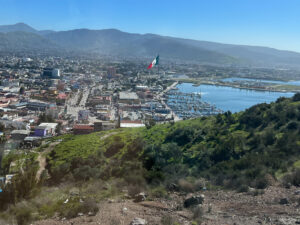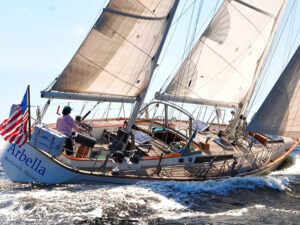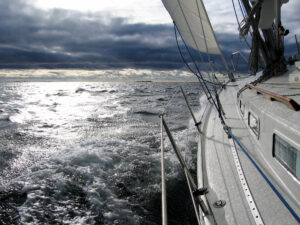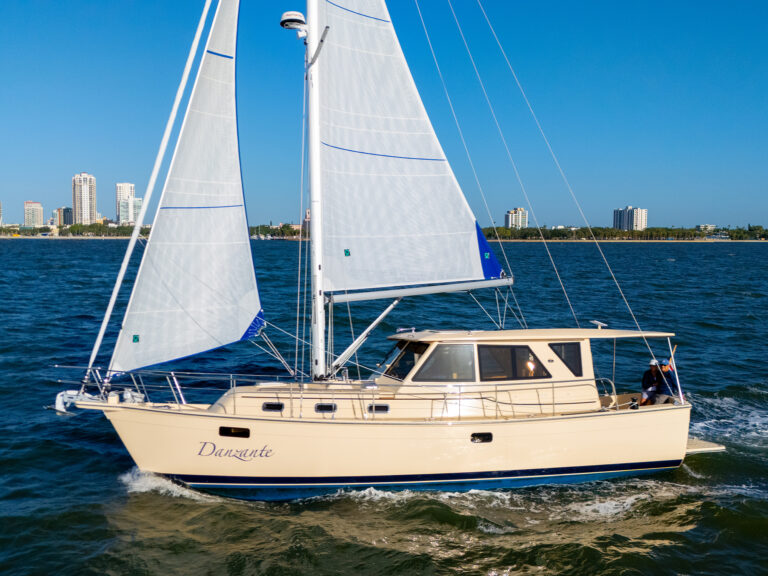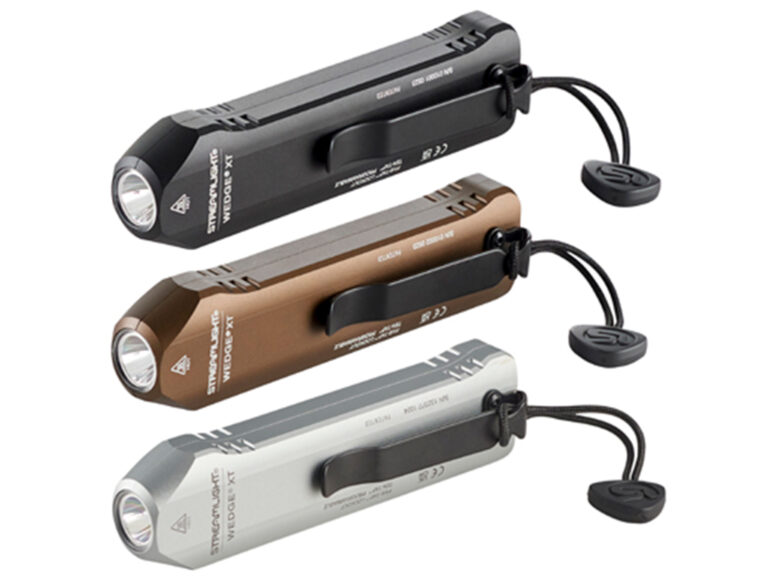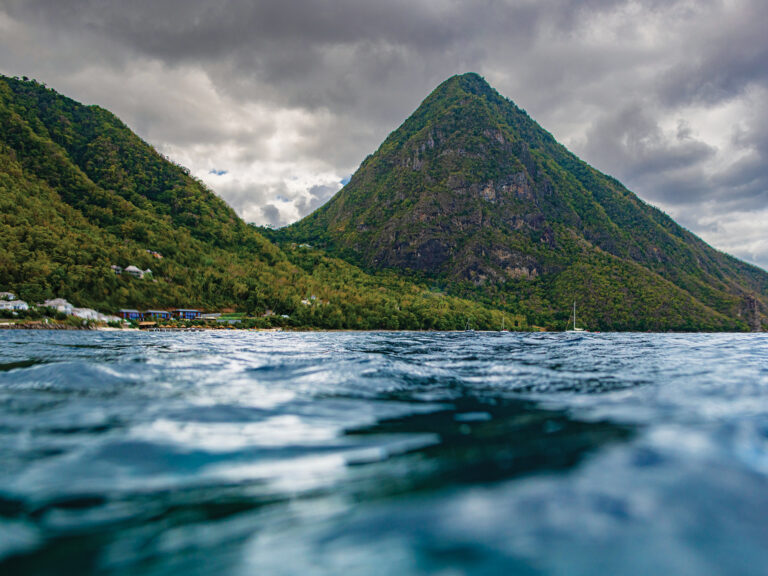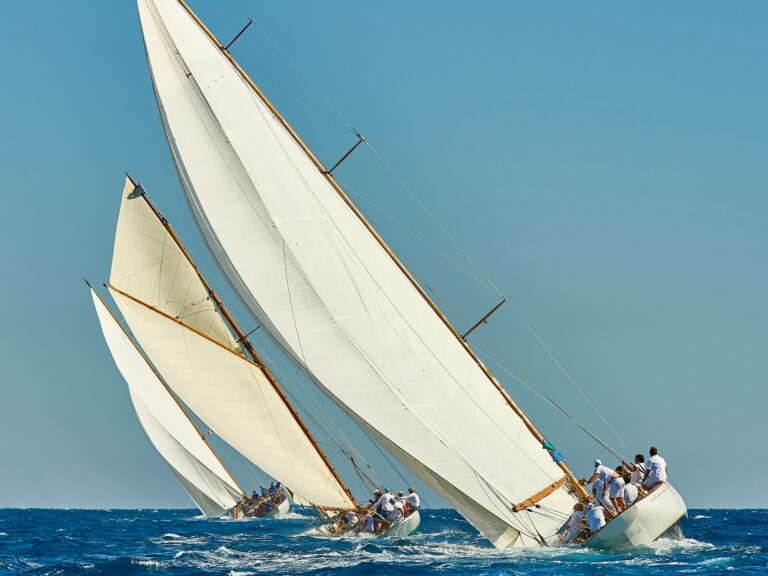
If you want to get away from it all, if you wish to tune out, drop from the grid, turn off your cellphone, ignore your email, forget cable TV and dismiss your digital links to the supposedly civilized world, consider the Sea of Cortez.
Instead of tweeting, posting or uploading — or whatever it is you normally do — you can luxuriate in a remote and starkly beautiful sea brimming with marine life that looks today much as it did to Hernan Cortes in the 16th century.
Some maps call the Sea of Cortez the Gulf of California, others the Vermilion Sea. I call it some of the most unspoiled, uncrowded cruising grounds I have ever encountered. However, if you’re looking for raucous beach bars, throbbing discos and luxury hotels, don’t go to the Sea of Cortez. Please.
Six of us, all experienced bluewater sailors, made our way there in the second week of March, when you can pretty much count on abundant sunshine, clear skies, temperatures in the 70s and 80s, and spring breezes, usually out of the north and northeast. Several of us had chartered and cruised together every spring for the past 15-plus years, mostly in the Caribbean, picking up boats from the Bahamas to the Grenadines. On an impulse, we had decided to try something different, and believe me, the Sea of Cortez is different. It’s a state of mind as much as a place, a world away from the British Virgin Islands’ Foxy’s or the Bitter End.
We chartered a Lagoon 440, a comfortable four-cabin catamaran from Dream Yacht Charter. The company has a base at the newish, handsome CostaBaja Resort and Marina in La Paz, Mexico, on the eastern shore of Baja California, about a three-hour van ride from the bright lights and busy beaches of Cabo San Lucas.
Our crew this year included Ian, a hand surgeon from London; Tobe, a financial adviser from Santa Barbara; Wayne, a yacht broker from Newport Beach; Bob, a videographer from Orange County, California; and another Bob, a recovering attorney and my neighbor in Annapolis, Maryland. With the exception of La Paz, with its tree-lined Malecon and busy harbor, there are no towns to speak of in the southern portion of the Sea of Cortez. There are also no bars, restaurants or hotels, and nowhere, really, to pick up supplies or replenishments along the way. This makes a shopping trip in La Paz at the outset of a cruise crucial to the success of the trip.
We planned and executed ours like a military mission.
Wayne the broker turned out to be Wayne the cook and organizer, so he was in command of our shopping expedition. He arrived with long lists of all the ingredients needed for three meals a day for six guys for six full days, or 108 individual meals. To this we added tequila, rum, vodka, wine and cases of Mexican beer — everything required to sustain crew morale and fight scurvy. The afternoon before departure, we hired Francisco, a driver with a Chevy Suburban, and fanned out across La Paz to stock up. Leaving nothing to chance, Wayne even spent $40 for a Proctor Silex blender to whip up daiquiris and the like. “No hardship” was clearly the motto for this cruise.
Three hours later, everything was iced down and stowed aboard Satisfaction, our aptly named cat, which seemed to settle a bit with the load. After a final meal ashore at Bismark, a seafront favorite in La Paz — where the six of us devoured two whole grilled red snapper, washed down with Chilean chardonnay — we were off, sailing north, leaving the city, civilization and cell service in our wake.
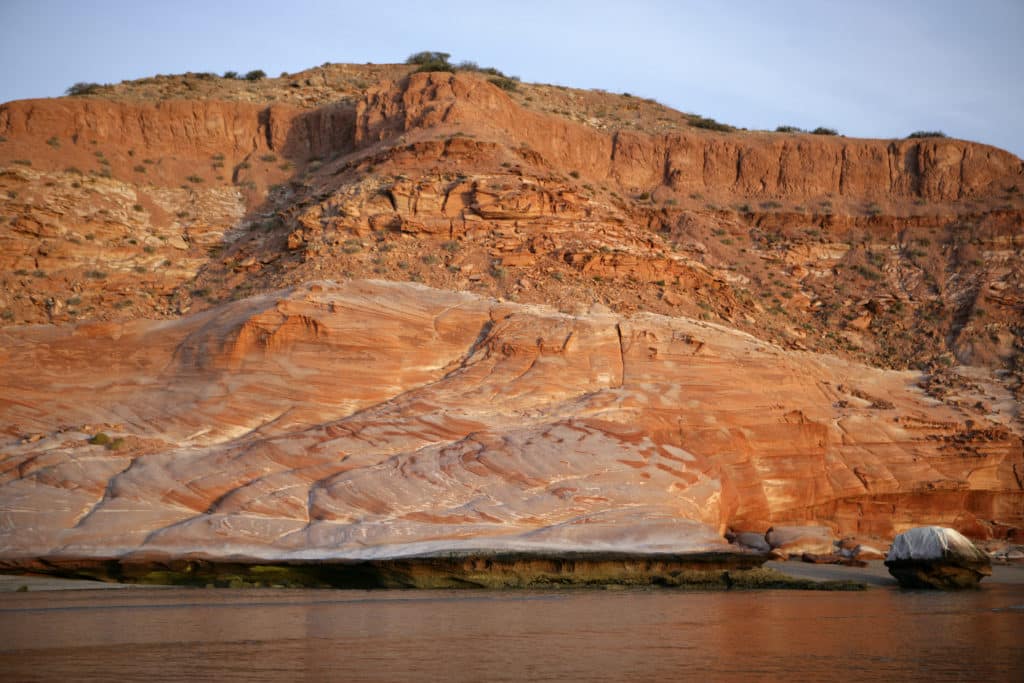
In Steinbeck’s Wake
The Sea of Cortez is about 775 miles long, separating the Baja California Peninsula from the Mexican mainland. Its clear, deep waters are a vast breeding ground for some 31 species of whales and dolphins — one-third of the world’s total — uncounted colonies of sea lions and marine turtles, and 500 varieties of fish. It is the migratory corridor for 210 bird species. So while you may think you are alone when you sail its uncrowded waters, you are not. Not by a long shot.
The Cortez is essentially a deep, blue sea surrounded by desert. The scenery is spectacular. The brown, volcanic mountains are mostly treeless except for tall, handsome cactus plants and the hardy dry scrub that thrives in every crevice and hollow. It is a stark and unforgiving landscape, but that is part of the allure. The author John Steinbeck wrote about the pull of Baja in The Log from the Sea of Cortez, describing his own specimen-gathering cruise here in 1940.
“If it were lush and rich,” he wrote, “one could understand the pull, but it is fierce and hostile and sullen. The stone mountains pile up to the sky and there is little fresh water. But we know we must go back.”
I understood what he meant as we sailed north to our first anchorage in Ensenada Grande, a broad, pretty bay on Isla Partida, 20-odd miles north of La Paz. The stone mountains do indeed pile up to the sky, rising a thousand and more feet straight up from the deep blue water. Steinbeck was here 75 years ago, and remarkably, little seems to have changed since. Save for a few eco-tourists camped here and there on the white sand beaches, it was the same wild and wonderful wilderness that he had described, most of it now protected as a national park.
After the first batch of rum punches emerged from the blender, Wayne the cook confronted an existential culinary crisis: We had no skewers for the fresh shrimp he wanted to grill. Ever resourceful, he promptly took the dinghy over to a big sport-fishing boat anchored nearby, knocked on the hull, and asked if they could spare not Grey Poupon, but skewers for the shrimp. Of course, said the skipper, who turned out to be a friend and client of Wayne’s who had bought the boat through his brokerage. He handed over a packet of wooden skewers and the crisis was averted.
Wayne set out six plates with succulent grilled shrimp, rice and salad, followed by dessert, establishing the standard of cuisine that would be matched every evening of the cruise. We grilled everything: fish, chicken, marinated flank steaks and, one night, freshly caught fish we’d purchased from local fishermen. All of this was washed down with a surprisingly good selection of Chilean and Argentine wines we found in La Paz. Again, no hardship on this cruise.
Breakfasts were pickup affairs, except for the second morning, when Brit Ian, fulfilling an annual cruise tradition, made his famous “full English,” which includes fried eggs, bacon, potatoes, fried tomatoes, baked beans and toast.
Speaking of food, the fresh fruit that comes from this arid landscape was nothing short of extraordinary: succulent mangoes, papaya, melons and pineapple, which made great salads, although some of it was sacrificed in the famous blender for rum punches and daiquiris. Plenty of vitamins in this crowd.
Buying the fresh fish was fun. We found it on Coyote Island, a tiny rock outcropping that was a three-day sail north of La Paz, and where perhaps a dozen fishermen and their families live most of the year in dusty wooden shacks clinging to the hillside. They net most of their catch just offshore and haul it into open, outboard-powered boats called pangas. Wayne and I went ashore and toured the little settlement in less than 10 minutes. We bought enough fresh halibut and cabrilla fillets for dinner for the six of us for about $5.
On one particularly beautiful morning, we motored in calm seas around Los Islotes, a remarkable California sea lion rookery where thousands of the big, bewhiskered characters frolic, play and breed, sending up a fearful, nonstop racket. Their deep voices ricochet continuously off the guano-covered rocks. What are they shouting about? Are they bellowing sweet nothings to the females in the crowd? I have no idea, but the din never quits.
Farther north, we motored through a vast, tumultuous school of long-nosed dolphins. The water all around the boat was boiling as the dolphins dived and leaped, scooting under the bow and then speeding off one way or the other. How many? No idea. Hundreds for sure, maybe thousands. Feeding? I suppose so, although I couldn’t see their prey. Or maybe they were just enjoying their own private, watery paradise. Just like us.

Idyllic Days and Nights
The breeze, usually out of the north-northeast as advertised, came up in the late morning and built to 12 to 14 knots in the early and midafternoon. Most days it eased off in the late afternoon or evening, and the temperature dropped from the high 70s to the mid-60s and lower still during the night — cool enough for a sheet or light blanket. Idyllic, really, and desert-dry under mostly cloudless skies.
The only English-language weather forecast we were able to catch was at 0800 each day on VHF channel 17, a joint volunteer broadcast organized by an American cruisers net that passed along local news and happenings, notices of swap sales, arrivals and departures, and the like. It was all very folksy and neighborly. From the sound of it, most of the cruisers on the net were in the Sea of Cortez for the season, and happy to be there. The one town — more a village — we found on our route along the east coast of the Baja Peninsula was San Evaristo, a scattered collection of houses strung along the beach at the foot of the rugged Sierra de la Giganta mountain range. It wasn’t much, but other than Coyote Island, it was the only settlement in the area, and it supposedly had a small grocery and even a simple restaurant where, we had been told in La Paz, a meal could be had “if she is cooking that day.” (She wasn’t.)
Anchoring well off the beach, we had a small problem. The battered Tohatsu outboard on the dinghy had coughed and quit and now refused to start. It would be a long, windblown row to shore, and the only boat traffic in the harbor consisted of San Evaristo fishermen coming and going in their fast pangas. Bob the videographer, who speaks a serviceable Spanish, picked up the VHF and explained our predicament on channel 16, noting that our outboard was dead and that we’d appreciate a ride to shore. Minutes later, Ramon, a cheerful and enterprising local fisherman known as Chico Lara, arrived in his 22-foot panga and took us under his wing.
In short order, Chico Lara ferried us into the village, where we bought a few meager provisions from the shack that serves as the grocery and four 12-packs of Tecate beer to stave off any emergencies in that department. The next morning Chico came back and took our lifeless outboard ashore. A local mechanic cleaned the carburetor and we were back in business. We paid Chico Lara $40 for his help over the two days, and you could tell from his broad grin that he was pleased. Every local we met in Baja had the same attitude: good-natured, resourceful and helpful.
A brisk northeasterly carried us across a broad channel to San Jose Island, where we anchored for a lunch stop off a vast mangrove maze. Using the dinghy with our now smooth-running outboard, we cruised through natural canals bordered by tall stands of flowering mangrove. Scores of white ibis and other birds perched in the bushes. The water was warm and translucent.
So went the cruise: one idyllic anchorage after another, with usually no more than a handful of other boats in sight. The night sky was ablaze with stars. Finally, heading back to La Paz, my cellphone chirped to life for the first time in nearly a week. At first I was startled by the sound, and then vaguely depressed at the prospect of rejoining the digital world and scrolling through scores of backed-up emails. A quick check of the headlines revealed that little had changed in that world while we were removed from it.
A remarkable sight greeted our reluctant return to the grid: Venus, the sleek and radically modern $120 million, 256-foot yacht built for the late Steve Jobs, was tied up at the fuel dock at the CostaBaja Resort. Wayne, who seemed to know the background of every boat in the harbor, reported that Jobs’ widow, Laurene Powell Jobs, now owns Venus. We saw busy crew aboard, but no sign of the owner or guests. We sailed past the shimmering white yacht with its gleaming stainless-steel prow pointed out to the open waters of the Sea of Cortez. Our Sea of Cortez.
Venus looked like a nautical Apple product, smooth, sharp and functional, like a floating iPhone 6 Plus. As we passed her, I wondered if her sleek lines had come out of the Apple design studio. Either way, she was the perfect metaphor for our return to the interconnected world that we had happily escaped on the Sea of Cortez.

Tips and Resources:
Getting There: American, Delta, Alaska and numerous other airlines service the busy Los Cabos International Airport (SJD) in San Jose del Cabo, Mexico. There is frequent shuttle van service to La Paz, the jumping-off point for charters in the Sea of Cortez. Plan on a scenic, bumpy three-hour ride through beautiful countryside.
Provisioning: La Paz has everything, from open-air markets to sprawling supermarkets. Buy all the food and beverages you expect to need for your charter; we found no shoreside restaurants outside La Paz. The tequila selection is bountiful, as you might expect.
Weather: It is hard to imagine better weather than what we encountered in the second week of March, with sunny, warm days; cool, comfortable nights; and pleasant northerly breezes that would come up in the late morning and settle down in the evening on most days. Spring, summer and fall are the favored cruising months. Winds are customarily out of the south in summer. Tidal effects are minimal.
Cruising Guides: There are several, but we brought and used Charlie’s Charts: Western Coast of Mexico, including Baja California, which served our purposes well.
Currency/Regulations: We used U.S. credit cards at restaurants and supermarkets in La Paz, and Mexican pesos to purchase fresh fish and small supplies en route. No advance visas are required for U.S. citizens. Insurance coverage was available through Dream Yacht Charter.
Communications: VHF radio is widely used, and all harbormasters and the Mexican navy monitor channel 16. Telcel provides local cellphone service. We had good coverage, with Wi-Fi and Internet access, in and around La Paz, but little to no service outside it — which was part of the charm. — T.S.
Journalist and author Terence Smith lives in Annapolis, Maryland, and regularly sails the Chesapeake Bay and beyond.

